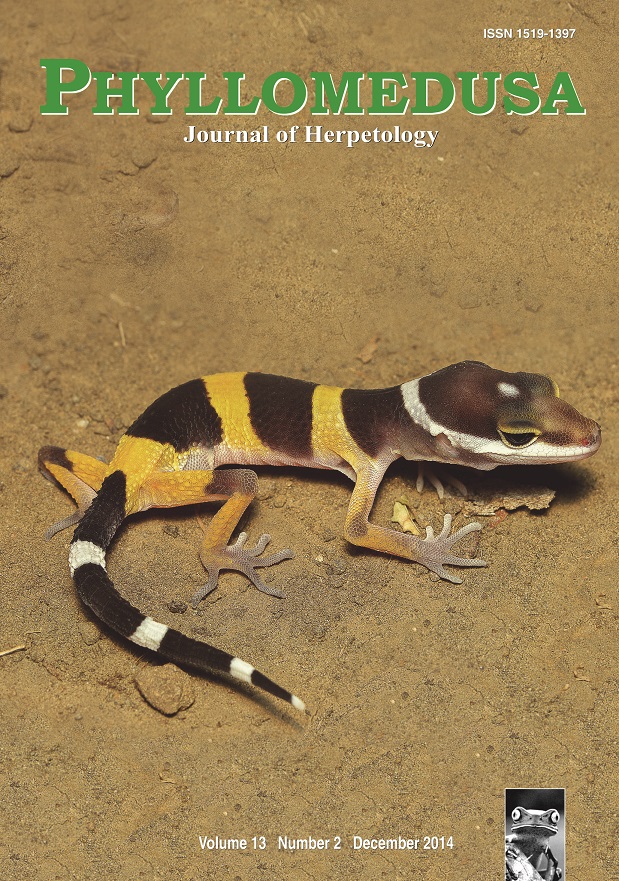Reproductive biology of the bushmaster Lachesis muta (Serpentes: Viperidae) in the Brazilian Atlantic Forest
DOI:
https://doi.org/10.11606/issn.2316-9079.v13i2p99-109Keywords:
fecundity, oviparity, reproductive cycle, South America.Abstract
The Neotropical genus Lachesis Daudin, 1803 includes snakes restricted to the humid forests of Central and South America. The species L. muta is the most widely dispersed, occurring throughout the Amazon rainforest, and with an isolated population in the Atlantic Forest, from the north of the state of Ceará to the south of the state of Rio de Janeiro, Brazil. We present information about the reproductive biology of L. muta from a large series of samples gathered in southern Bahia. Mature males L. muta are larger than females. Degree of sexual size dimorphism (SSD) is 0.16. Vitellogenic follicles and eggs are not distributed equally throughout the year. Clutch size was 3–14 oviductal eggs and was positively correlated with female SVL. Testes volume and ductus deferens diameter in mature individuals did not vary significantly throughout the year. The reproductive pattern of L. muta differs from that of the phylogenetically related genera because L. muta is oviparous, and has a discontinuous cycle and reproductive synchrony between the sexes.Downloads
Download data is not yet available.
Downloads
Published
2014-12-24
Issue
Section
Articles
License
All material originally published in Phyllomedusa belongs to Escola Superior de Agricultura Luiz de Queiroz - Universidade de São Paulo. All contents are under a license of Creative Commons BY-NC-ND.How to Cite
Alves, F. Q., Argôlo, A. J. S., & Carvalho, G. C. (2014). Reproductive biology of the bushmaster Lachesis muta (Serpentes: Viperidae) in the Brazilian Atlantic Forest. Phyllomedusa: Journal of Herpetology, 13(2), 99-109. https://doi.org/10.11606/issn.2316-9079.v13i2p99-109



 Impact Factor (JCR): 0.400
Impact Factor (JCR): 0.400 CiteScore: 1.0
CiteScore: 1.0